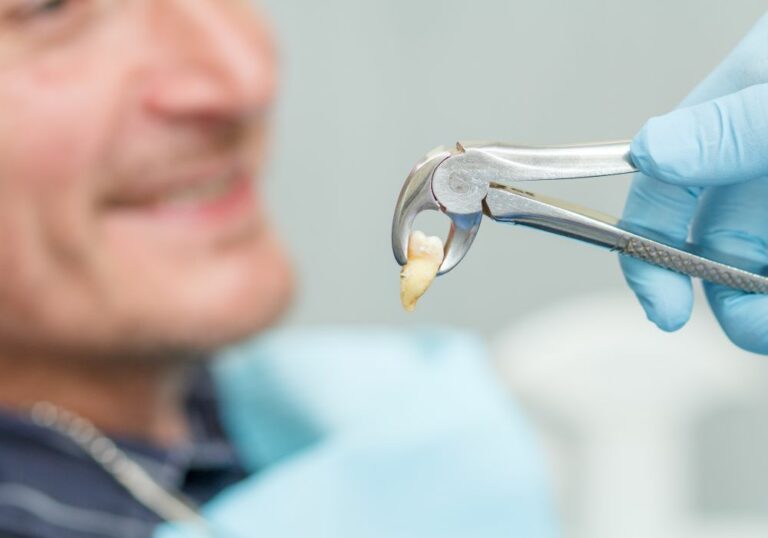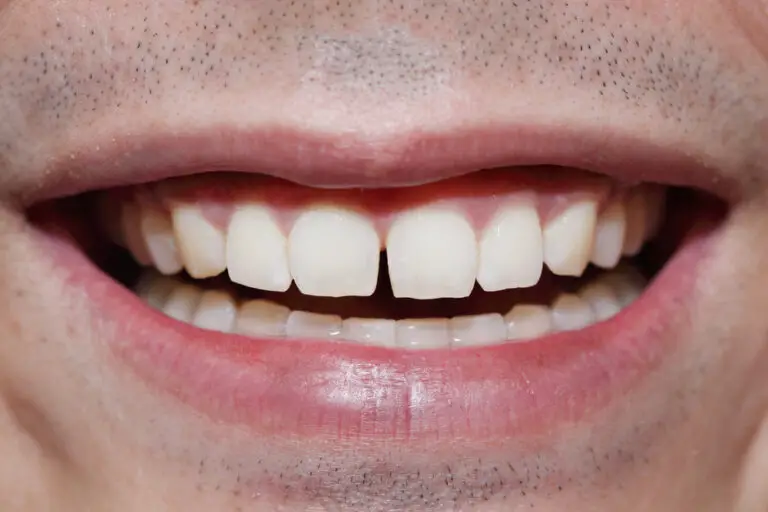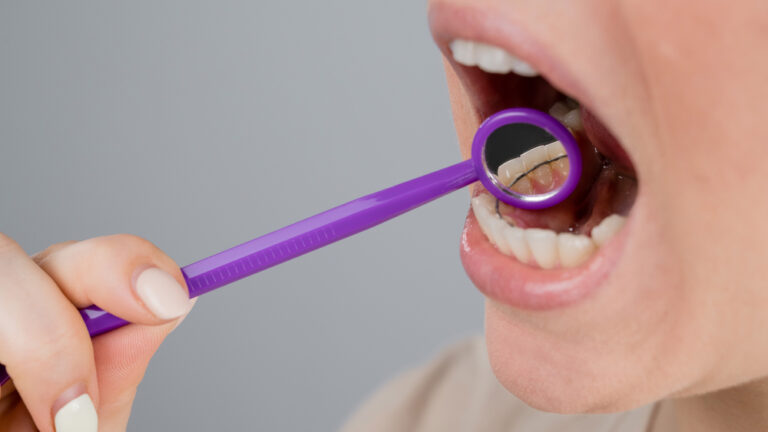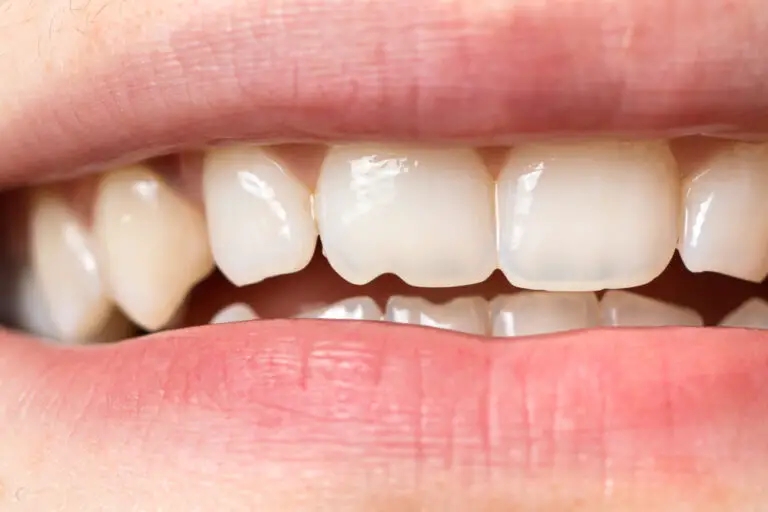If you’ve ever had a cavity, you know how uncomfortable they can be. Cavities can cause toothaches, sensitivity, and even tooth loss if left untreated. But what happens when the cavity is in between two teeth? Can a dentist fill a cavity in between two teeth?
The short answer is yes, a dentist can fill a cavity in between two teeth. This type of cavity is known as an interproximal cavity and is one of the most common types of cavities. Interproximal cavities occur when the enamel on two adjacent teeth wears away, leaving a space in between them where bacteria can thrive and cause decay.
To fill an interproximal cavity, a dentist will first numb the area with a local anesthetic. Then, they will use a drill to remove the decayed portion of the tooth and shape the remaining tooth structure to hold the filling material. The filling material is then placed into the cavity and shaped to match the natural contours of the tooth. The filling is then hardened with a special light and polished to a smooth finish.
Understanding Dental Cavities

Dental cavities are a common dental problem that affects people of all ages. They are caused by bacteria that produce acid in the mouth, which erodes the enamel (the outer layer of the tooth) and causes decay. Cavities can occur on any surface of the tooth, including in between two teeth, which is known as an interproximal cavity.
Interproximal cavities are particularly problematic because they can be difficult to detect and treat. They often go unnoticed until they have progressed to a more advanced stage, which can require more invasive treatment. It is important to understand the causes and symptoms of cavities in order to prevent them and catch them early.
Causes of Dental Cavities
Dental cavities are caused by a combination of factors, including poor oral hygiene, a diet high in sugar and carbohydrates, and a lack of fluoride. When bacteria in the mouth feed on sugar and carbohydrates, they produce acid that erodes the enamel and causes decay. Over time, this decay can progress and lead to a cavity.
Symptoms of Dental Cavities
The symptoms of a dental cavity can vary depending on the severity and location of the cavity. In the early stages, a cavity may not cause any noticeable symptoms. As it progresses, you may experience:
- Sensitivity to hot or cold temperatures
- Pain or discomfort when biting down or chewing
- Visible holes or pits in the teeth
- Discoloration or darkening of the tooth
If you are experiencing any of these symptoms, it is important to see a dentist as soon as possible.
Prevention and Treatment of Dental Cavities
Preventing dental cavities involves maintaining good oral hygiene habits, such as brushing twice a day, flossing daily, and using an antiseptic mouthwash. It is also important to limit your intake of sugary and carbohydrate-rich foods and drinks, and to drink plenty of water.
If you do develop a cavity, treatment will depend on the severity and location of the cavity. In the case of an interproximal cavity, your dentist may need to use special tools to detect and treat the cavity. This may involve removing decayed material and filling the cavity with a filling material, such as resin-based composite or dental amalgam.
Overall, understanding dental cavities and taking steps to prevent and treat them is essential for maintaining good oral health.
The Role of a Dentist

When it comes to treating a cavity between two teeth, a dentist plays a crucial role in identifying and providing the necessary treatment. Here are some of the key responsibilities of a dentist in treating interproximal cavities:
1. Diagnosis
A dentist will use various diagnostic tools such as X-rays, intraoral cameras, and dental probes to identify the presence of a cavity between two teeth. They will examine the teeth and surrounding tissues to determine the extent of the decay and come up with a personalized treatment plan.
2. Treatment
Once a cavity is identified, a dentist will remove the decayed tissue and fill the space with a filling material. The filling material can be made of various materials, including amalgam, composite resin, or porcelain. The choice of material will depend on several factors, such as the location of the cavity, the extent of decay, and the patient’s preference.
3. Prevention
A dentist will also provide guidance on how to prevent cavities from forming between teeth in the future. This can include recommendations on oral hygiene practices such as brushing and flossing, dietary changes, and the use of dental sealants.
4. Follow-up Care
After the cavity is filled, a dentist will schedule follow-up appointments to monitor the healing process and ensure that the filling is functioning correctly. They will also provide guidance on how to care for the filling and prevent future cavities.
Overall, a dentist plays a critical role in identifying, treating, and preventing cavities between teeth. Regular dental checkups and cleanings can help catch cavities early on and prevent them from causing more significant problems.
Cavity Filling Procedure
If you have a cavity in between two teeth, your dentist can fill it to prevent further damage and tooth loss, as well as the possibility of pain and infection. Here’s what you can expect during the cavity filling procedure:
Preparation
Before the procedure, your dentist will numb the area around the affected tooth with a local anesthetic. They may also provide you with a rubber dam to isolate the tooth and keep it dry during the procedure.
Procedure
Once the area is numb and dry, your dentist will use a drill or laser to remove the decayed part of the tooth. They will then clean the area and prepare it for the filling material. The filling material can be made of different materials such as amalgam, composite resin, or porcelain.
After the filling material is placed, your dentist will shape and polish it to match the natural contours of your teeth. They may also use a special light to harden the filling material and ensure its durability.
Aftercare
After the procedure, you may experience some sensitivity or discomfort in the affected tooth. This is normal and should subside within a few days. You can take over-the-counter pain relievers to manage any discomfort.
It’s important to maintain good oral hygiene habits, such as brushing twice a day and flossing daily, to prevent future cavities. You should also visit your dentist regularly for check-ups and cleanings.
In summary, getting a cavity filled in between two teeth is a common dental procedure that can help prevent further damage and tooth loss. Talk to your dentist if you have any concerns or questions about the procedure.
Filling Cavities Between Teeth

If you have a cavity between your teeth, you may be wondering if a dentist can fill it. The answer is yes, but there are some challenges that come with filling cavities in this location.
Challenges
Filling cavities between teeth can be more difficult than filling cavities on the chewing surface of a tooth. Here are some of the challenges that dentists face when filling cavities between teeth:
- Access: It can be difficult to access the cavity because it is located between two teeth.
- Visibility: The dentist may not be able to see the cavity very well because it is hidden between two teeth.
- Proximity to the gum line: If the cavity is close to the gum line, it can be difficult to fill without affecting the gum tissue.
Solutions
Despite these challenges, dentists have several solutions for filling cavities between teeth. Here are a few options:
- Dental bonding: This is a procedure where the dentist applies a tooth-colored resin to the surface of the tooth and then hardens it with a special light. Bonding is a good option for small cavities between teeth that are not too close to the gum line.
- Inlays and onlays: These are custom-made restorations that are used to fill larger cavities between teeth. Inlays and onlays are made in a dental laboratory and then cemented onto the tooth by the dentist.
- Crowns: If the cavity is very large or if the tooth is weakened, a crown may be necessary. A crown is a custom-fitted covering that replaces the entire natural crown of the tooth.
In conclusion, dentists can fill cavities between teeth, but it can be more challenging than filling cavities on the chewing surface of a tooth. If you have a cavity between your teeth, talk to your dentist about the best treatment options for your specific situation.
Prevention Strategies
Preventing cavities from forming between your teeth is the best way to avoid having to get them filled by a dentist. Here are some effective prevention strategies that you can follow:
Oral Hygiene
Maintaining good oral hygiene is crucial for preventing cavities in between your teeth. Brush your teeth twice a day with fluoride toothpaste and floss at least once a day to remove food particles and plaque from between your teeth. Consider using an interdental brush or water flosser if you have trouble using traditional floss.
Regular Check-Ups
Regular dental check-ups are essential for identifying and treating cavities in their early stages. Schedule a dental check-up every six months to detect any cavities that may have formed between your teeth. Your dentist can also clean your teeth to remove any plaque or tartar buildup that can lead to cavities.
Healthy Diet
A healthy diet is essential for maintaining good oral health and preventing cavities. Limit your intake of sugary and acidic foods and drinks, as they can erode your tooth enamel and increase your risk of developing cavities. Instead, eat a balanced diet rich in fruits, vegetables, whole grains, and lean proteins to keep your teeth and gums healthy.
By following these prevention strategies, you can reduce your risk of developing cavities in between your teeth and maintain good oral health.
Frequently Asked Questions
How does a dentist fix a cavity between two teeth?
To fix a cavity between two teeth, a dentist will first numb the area with a local anesthetic. Then, they will use a drill or laser to remove the decayed portion of the tooth. Once the decay is removed, the dentist will fill the cavity with a dental filling material, such as composite resin or amalgam.
Does filling cavities in between teeth hurt?
The process of filling a cavity between teeth should not be painful because the area will be numbed with a local anesthetic. However, you may experience some discomfort or sensitivity after the procedure.
How long does a cavity filling take in between teeth?
The time it takes to fill a cavity between two teeth can vary depending on the size and location of the cavity. Generally, it takes about 30 minutes to an hour to fill a cavity.
Can a cavity be too deep to fill?
If a cavity is too deep, it may require a root canal or extraction instead of a filling. Your dentist will determine the best course of action based on the extent of the decay and the overall health of the tooth.
What causes cavities between teeth?
Cavities between teeth are caused by a buildup of plaque and bacteria on the tooth surface. When sugars and carbohydrates are consumed, they combine with the bacteria in the mouth to produce acid, which can erode the tooth enamel and create a cavity.
Is it possible to prevent cavities in between teeth?
Yes, it is possible to prevent cavities between teeth by practicing good oral hygiene. This includes brushing twice a day, flossing daily, and using an antiseptic mouthwash. Additionally, reducing sugar and carbohydrate intake can help prevent the buildup of plaque and bacteria on the teeth.






